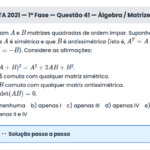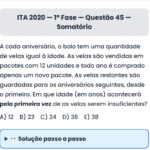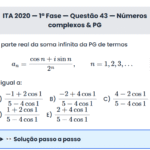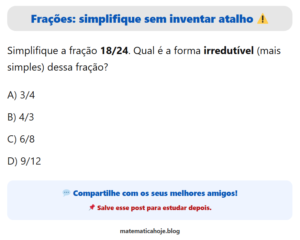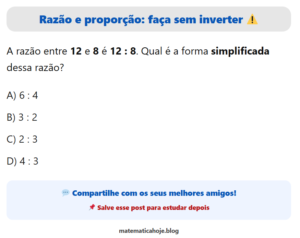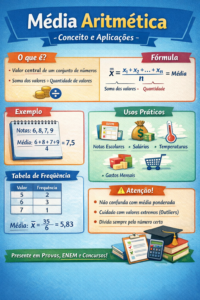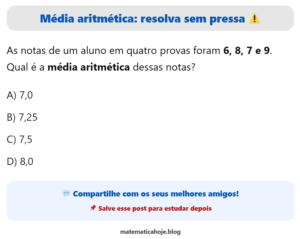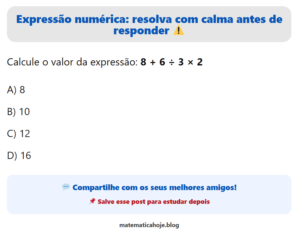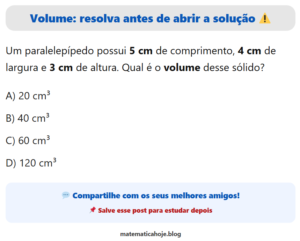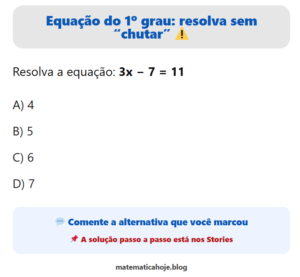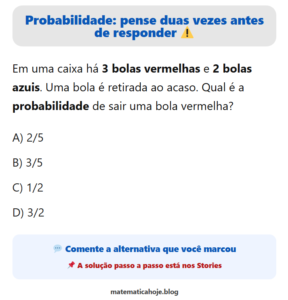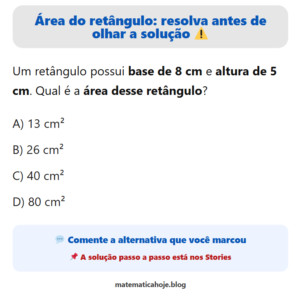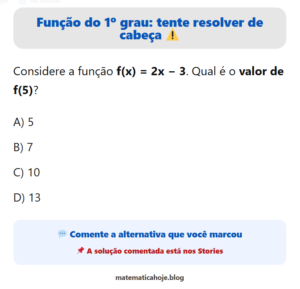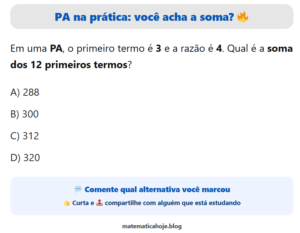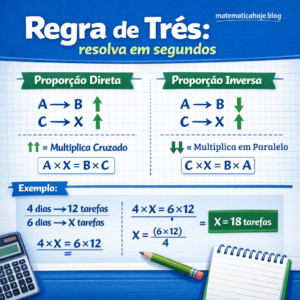ITA 2023 — 2ª Fase — Questão 01 — Sistemas Lineares
Sejam \(a\) e \(b\) números reais positivos. Considere o sistema linear nas incógnitas \(x,y,z\):
\[
\begin{cases}
-ax + by + az = 0\\
b^2x + a^2y + 4a^2z = 0\\
4a^2x + a^3y + b^2z = 0
\end{cases}
\]
Sabendo que esse sistema admite solução não trivial, determine \(b\) em função de \(a\).
Depois, determine o conjunto solução do sistema para \(a=\dfrac12\).
👀 Solução passo a passo
1) Condição de existência de solução não trivial:
Para existir solução não trivial, o determinante da matriz dos coeficientes deve ser zero. Fatorando por \(a>0\) e usando que \(a,b>0\), chega-se a \[ (b^4-16a^4)(b^2-4a^2)=0 \quad\Rightarrow\quad b=0 \ \text{(inválido)} \ \text{ou}\ b^4=16a^4. \] Como \(a,b>0\), resulta \[ \boxed{\,b=2a\, }. \] 2) Resolver o sistema para \(a=\dfrac12\) e \(b=2a=1\):
O sistema fica \[ \begin{cases} -\tfrac12 x + y + \tfrac12 z = 0\\[2pt] x + \tfrac18 y + z = 0\\[2pt] x + 2y + z = 0 \end{cases} \] Subtraindo a 2ª da 3ª equação: \[ \left(x+2y+z\right)-\left(x+\tfrac18y+z\right)=0 \;\Rightarrow\; \tfrac{17}{8}y+0\cdot x+0\cdot z=0 \;\Rightarrow\; y=-\tfrac{16}{17}z. \] Substituindo em \(x+\tfrac18 y + z=0\): \[ x+\tfrac18\!\left(-\tfrac{16}{17}z\right)+z=0 \;\Rightarrow\; x-\tfrac{2}{17}z+z=0 \;\Rightarrow\; x=-\tfrac{15}{17}z. \] Tomando \(z=\alpha\in\mathbb{R}\), obtemos \[ (x,y,z)=\left(-\tfrac{15}{17}\alpha,\ -\tfrac{16}{17}\alpha,\ \alpha\right). \]
Para existir solução não trivial, o determinante da matriz dos coeficientes deve ser zero. Fatorando por \(a>0\) e usando que \(a,b>0\), chega-se a \[ (b^4-16a^4)(b^2-4a^2)=0 \quad\Rightarrow\quad b=0 \ \text{(inválido)} \ \text{ou}\ b^4=16a^4. \] Como \(a,b>0\), resulta \[ \boxed{\,b=2a\, }. \] 2) Resolver o sistema para \(a=\dfrac12\) e \(b=2a=1\):
O sistema fica \[ \begin{cases} -\tfrac12 x + y + \tfrac12 z = 0\\[2pt] x + \tfrac18 y + z = 0\\[2pt] x + 2y + z = 0 \end{cases} \] Subtraindo a 2ª da 3ª equação: \[ \left(x+2y+z\right)-\left(x+\tfrac18y+z\right)=0 \;\Rightarrow\; \tfrac{17}{8}y+0\cdot x+0\cdot z=0 \;\Rightarrow\; y=-\tfrac{16}{17}z. \] Substituindo em \(x+\tfrac18 y + z=0\): \[ x+\tfrac18\!\left(-\tfrac{16}{17}z\right)+z=0 \;\Rightarrow\; x-\tfrac{2}{17}z+z=0 \;\Rightarrow\; x=-\tfrac{15}{17}z. \] Tomando \(z=\alpha\in\mathbb{R}\), obtemos \[ (x,y,z)=\left(-\tfrac{15}{17}\alpha,\ -\tfrac{16}{17}\alpha,\ \alpha\right). \]
• \(b=2a\).
• Para \(a=\dfrac12\): \(\displaystyle S=\left\{\left(-\frac{15}{17}\alpha,\ -\frac{16}{17}\alpha,\ \alpha\right)\!:\ \alpha\in\mathbb{R}\right\}.\)
• Para \(a=\dfrac12\): \(\displaystyle S=\left\{\left(-\frac{15}{17}\alpha,\ -\frac{16}{17}\alpha,\ \alpha\right)\!:\ \alpha\in\mathbb{R}\right\}.\)



